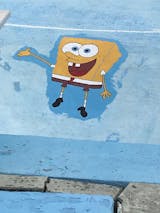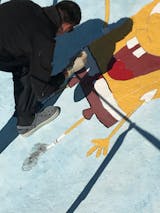Insl-X Chlorinated Rubber Pool paint is specifically designed for application on both new and existing masonry pools that are in-ground. This versatile paint can be used in various pool environments, including fresh water, salt water, and chlorinated pools.
Chlorinated Rubber Swimming Pool Paint is a high-quality coating made from chlorinated rubber, which offers exceptional resistance to chemicals. It is a reliable choice for both fresh and saltwater pools, and suitable for use in chlorinated pools as well. Whether you have a brand-new pool or want to give your old masonry pool a fresh look, this paint is an excellent option. Its durability and chemical resistance make it an ideal choice for long-lasting pool protection.
Insl-X Chlorinated Rubber Pool Paint is suitable for application on top of pre-existing chlorinated rubber pool paint or on various masonry surfaces such as bare concrete, marcite, or gunite, as long as those surfaces are in good condition.
Insl-X Chlorinated Rubber Swimming Pool paint is formulated for use on new or old in-ground masonry pools. Can also be used in fresh, salt water, or chlorinated pools.
Cleanup: Xylene
SUGGESTED USES: Concrete, Gunnite*, Marcite*, Pools
*Integrity of marcite or gunnite must be sound and solid.
In addition to Insl-X Chlorinated Rubber Pool paint, we offer a wide variety of other swimming pool paints to cater to different preferences and requirements. Our range includes epoxy-based paints that provide superior adhesion and resistance to chipping, as well as acrylic-based paints that offer excellent color retention and UV protection. Whatever your pool surface may be, we have the perfect solution to revive its appearance.
We understand that maintaining a pool can be a demanding task, which is why we strive to provide reliable products that simplify the process. Our swimming pool paints are designed for easy application, ensuring a smooth and even finish. Whether you are a professional painter or a DIY enthusiast, you can achieve professional-looking results with our user-friendly swimming pool paints.
Revive your pool's beauty with our top-notch swimming pool paints. Explore our extensive selection today and transform your pool into a stunning oasis. Trust ThePaintStore.com for all your swimming pool paint needs.
- Sheen: Semi-Gloss
- Coating Material: Rubber-Based
- Product Type: Swimming Pool Paint
- Container Size: 1 gal
- Color Family: Blue
- VOC Level: 600 g/L
- Time Before Recoating: 24 hr
- Coverage Area: 250 - 300 sq ft
- Clean Up: Xylene
FREE SHIPPING ON PALLETS!
For application information:
Insl-X Chlorinated Rubber Swimming Pool Paint Technical Data Sheet
Insl-X Pool Paints FAQ Sheet
Insl-X Pool Paint Solvent Test























